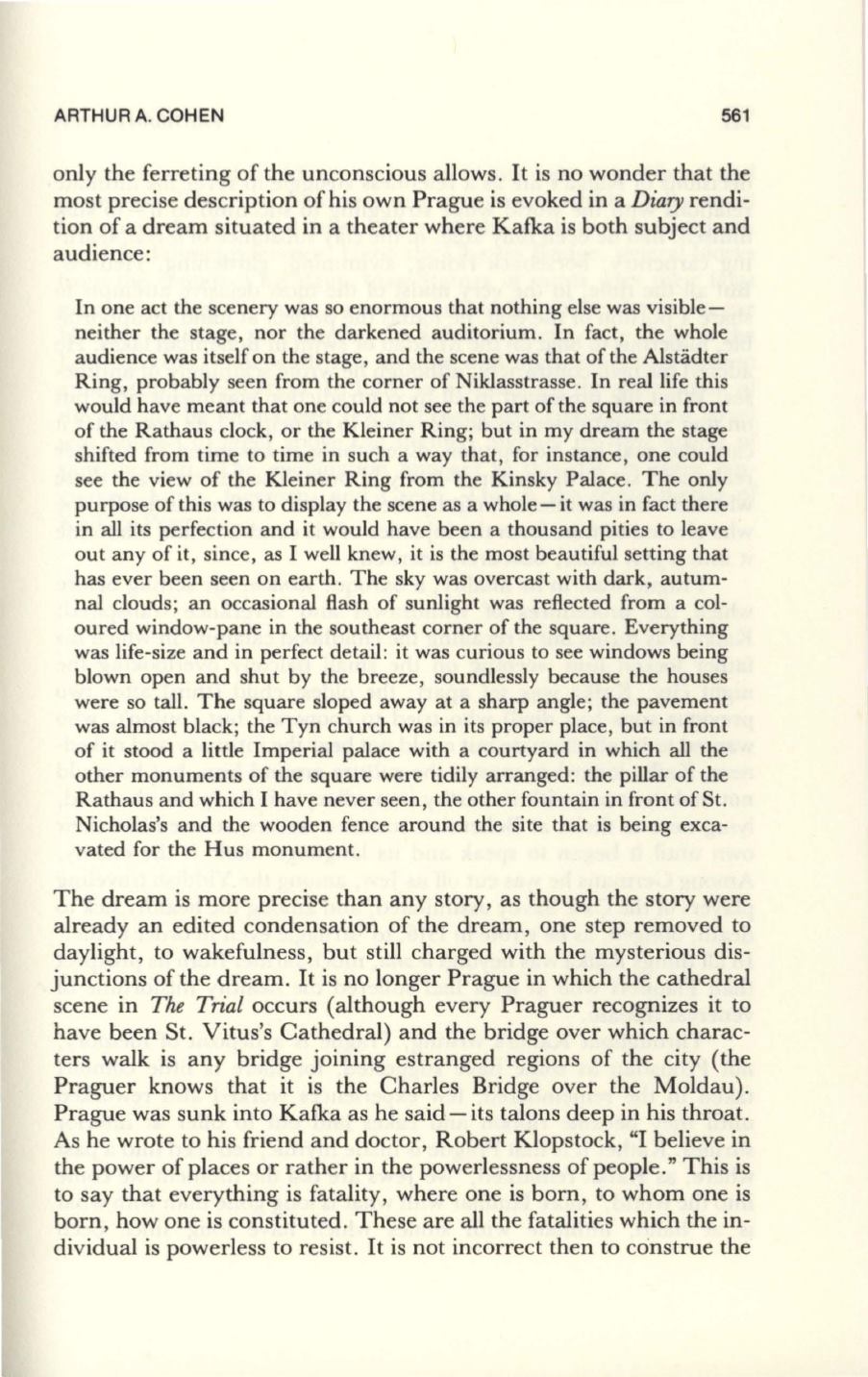
ARTHUR A. COHEN
561
only the ferreting of the unconscious allows. It is no wonder that the
most precise description of his own Prague is evoked in a
Diary
rendi–
tion of a dream situated in a theater where Kafka is both subject and
audience:
In one act the scenery was so enormous that nothing else was visible–
neither the stage, nor the darkened auditorium. In fact, the whole
audience was itself on the stage, and the scene was that of the Alstadter
Ring, probably seen from the corner of Niklasstrasse. In real life this
would have meant that one could not see the part of the square in front
of the Rathaus clock, or the Kleiner Ring; but in my dream the stage
shifted from time to time in such a way that, for instance, one could
see the view of the Kleiner Ring from the Kinsky Palace. The only
purpose of this was to display the scene as a whole - it was in fact there
in
all
its perfection and it would have been a thousand pities to leave
out any of it, since, as I well knew, it is the most beautiful setting that
has ever been seen on earth. The sky was overcast with dark, autum–
nal clou-ds; an occasional flash of sunlight was reflected from a col–
oured window-pane in the southeast corner of the square. Everything
was life-size and in perfect detail: it was curious to see windows being
blown open and shut by the breeze, soundlessly because the houses
were so tall. The square sloped away at a sharp angle; the pavement
was almost black; the Tyn church was in its proper place, but in front
of it stood a little Imperial palace with a courtyard in which all the
other monuments of the square were tidily arranged: the pillar of the
Rathaus and which I have never seen, the other fountain in front of St.
Nicholas's and the wooden fence around the site that is being exca–
vated for the Hus monument.
The dream is more precise than any story, as though the story were
already an edited condensation of the dream, one step removed to
daylight, to wakefulness, but still charged with the mysterious dis–
junctions of the dream. It is no longer Prague in which the cathedral
scene in
The Trial
occurs (although every Praguer recognizes it to
have been St. Vitus's Cathedral) and the bridge over which charac–
ters walk is any bridge joining estranged regions of the city (the
Praguer knows that it is the Charles Bridge over the Moldau).
Prague was sunk into Kafka as he said - its talons deep in his throat.
As he wrote to his friend and doctor, Robert Klopstock, "I believe in
the power of places or rather in the powerlessness of people. " This is
to say that everything is fatality, where one is born, to whom one is
born , how one is constituted. These are all the fatalities which the in–
dividual is powerless to resist. It is not incorrect then to construe the


